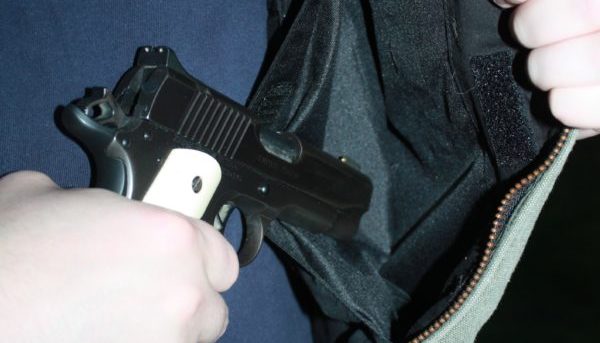
A new study on the impact of permitless carry in eight of Ohio’s largest cities has produced a stunning revelation which refutes a key argument against the law: Gun-related crime in six of the eight cities declined, and overall, eliminating the need for carry licenses had no discernible effect.
The 22-page study was commissioned by the office of Attorney General Dave Yost, with Bowling Green State University. It covers the time period from one year before the law took effect to one year after.
As noted in the headline of an Op-Ed by Ohio Attorney General Dave Yost appearing at National Review, the Buckeye State experience so far “just disproved a gun control talking point.”
“I honestly did not know what the data would show,” Yost writes, “but a study seemingly would be useful for the ongoing debate either way. The numbers could have increased — gun crime, like any other crime, has multiple causes. And it wouldn’t have been surprising if the numbers had stayed the same, because a great deal of the action taken by government seems to have marginal impacts, if any…But the numbers went down.”
Yost, a Republican, notes in his Op-Ed that gun-related crime dropped “a whopping 22 percent” in the city of Parma after permitless carry took effect. He says the cities of Akron and Toledo each experienced a decline of 18 percent in gun-related crime, and it dropped by 12 percent in Columbus.
“Canton and Cleveland had single-digit percentage decreases,” Yost writes. “Cincinnati and Dayton had single-digit percentage increases.”
According to the study’s executive summary there are six significant takeaways:
- Results from a trend analysis indicated a significant decrease in crime incidents involving a firearm for Akron, Columbus, and Toledo, and across all 8 cities combined from June 2021- June 2023.
- As displayed in the figure above, most cities’ crime rates decreased after the PCL was enacted. Unlike the other six cities, rates in Dayton and Cincinnati increased slightly, however.
- Toledo, Parma, and Akron each experienced an average of 19% decrease in summed rates of crimes involving a firearm post-PCL.
- Based on data from June 2021-June 2023, the enactment of the PCL does not appear to have any appreciable effect on law enforcement injuries or deaths by firearm in the cities of interest.
- Data on gunshot detection technology for Toledo and Columbus also captured a decrease in validated crime incidents post-PCL by 23.2% and 20.6%, respectively.
- Increases in crime rates in the spring-summer months appear both before and after the PCL went into effect for most cities (see Figure 1 in full report), but this observation could be due to the influence of other factors such as time of year or structural population characteristics. This slight acceleration in crimes involving firearms was also temporary.
Ohio’s “constitutional carry” law took effect on June 13, 2022, about two weeks prior to the Supreme Court’s landmark ruling in the Bruen case, which set new guidelines for determining the constitutionality of gun control laws challenged under the Second Amendment. The gun control landscape has been permanently changed as a result, but as Yost observes in his Op-Ed, some minds don’t change.
His opening paragraphs describe the opposition, and angry protestations, of three Ohio mayors, Justin Bibb of Cleveland, Andrew Ginther of Columbus and Aftab Pureval of Cincinnati.
The study includes charts and graphs with plenty of detail.
“In sum,” the study concludes, “our observations of the trends pre- and post-PCL (Permitless Carry Law) lead us to surmise that to date, the effects of the PCL are minimal on crime rates involving firearms, number of shots detected, and law enforcement officer injuries and deaths and generally show a decrease.”